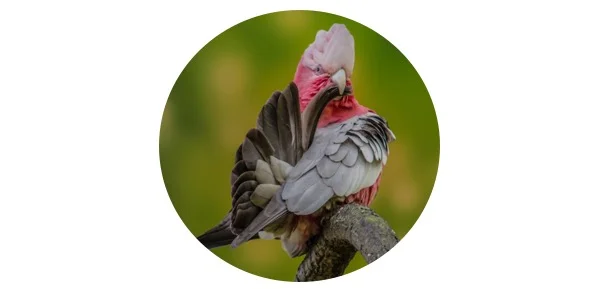Common Buzzard: Description, Types, Pictures, & Fun Facts
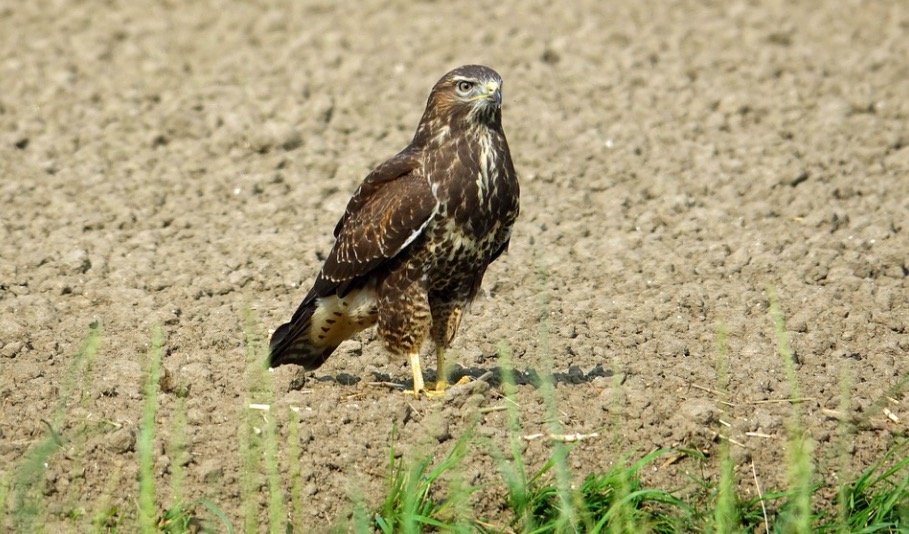
Table of Contents
Scientific Classification of Common Buzzard
- Kingdom: Animalia
- Phylum: Chordata
- Class: Aves
- Order: Accipitridae
- Genus: Buteo
- Species: Buteo buteo
Locations of Common Buzzard
- Africa
- Asia
- Eurasia
- Europe
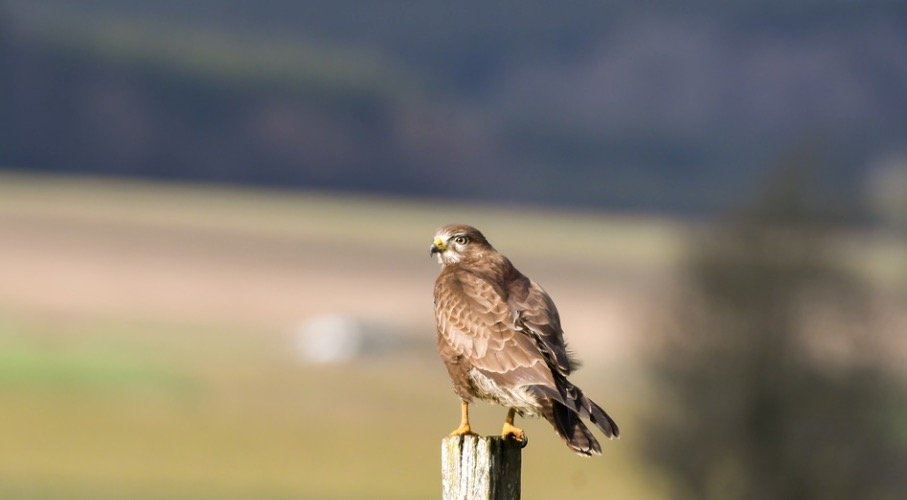
Common Buzzard Description
The common buzzards are native to Europe, Africa, and Asia. The birds are generally carnivorous that prefer to feed on reptiles, rodents, birds, and sometimes dead animals. The birds are monogamous and live in groups and flocks.
Amazing Facts About Common Buzzard
Common buzzards are distributed in almost every country in the United Kingdom.
Common buzzard feeds on worms found on earth. They attract the worms by stomping their feet on the earth.
Sometimes the birds are also known as ‘’tourist eagles’’ they get their name because they are considered eagles by many tourists, which is probably a buzzard instead of an eagle.
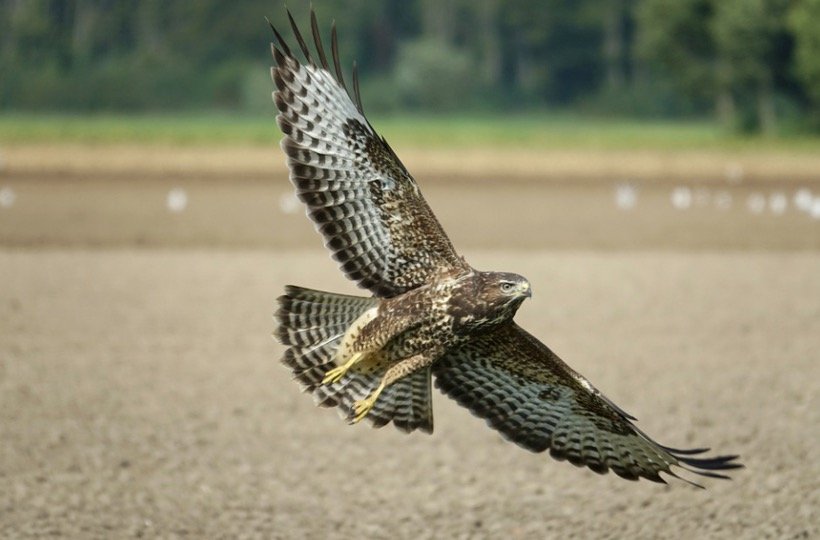
Distribution of Common Buzzard
Common buzzards are native to Europe. The birds can be found in countries such as Ireland, France, Greece, and England. In the Asian continent, the birds are distributed among Russia, China, India, and Mongolia.
During the winter months, the birds living in colder regions migrate to South Africa. Common buzzards have preferred habitats including woodlands, marsh boys, scrubs, farmlands, and around cities and suburban areas.
They prefer a temperate climate to live in. In Scotland, Wales, and England, the birds can be spotted throughout the year. They become most active during the spring season.
They can be commonly seen on Fences Street light and in trees by birdwatchers and tourists. Sometimes they were spotted while searching prey over fields and hillsides.
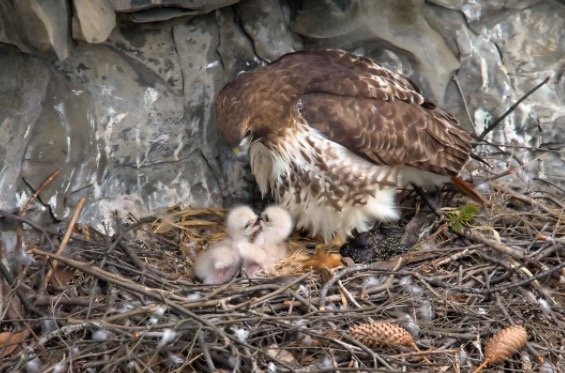
Nest of Common Buzzards
The common buzzard use sticks, branches, and twigs to build their nests. They build their nests in trees and prefer a strong fork or trunk of the tree. They build nests at the height of 10 to 80 feet. Some buzzard species prefer rocky cliffs to build their nests.
However, the nests are used every year by common buzzard but they can change the size and shape of the nest and also repair it. Usually, the nests were built by the male buzzard.
Common Buzzard Species
The scientific name of the common buzzard is the Buteo buteo. The genus name buteo was derived from a Latin word, which means hawk. Sometimes, a common buzzard was also known as a tourist eagle because most of the tourists confuse it with an eagle in Europe.
The buteo genus belongs to the family Accipitridae and class Aves. The common buzzard is further classified into 28 subspecies. The common species are such as-
- Buteo buteo rothschildi
- Buteo buteo arrigonii
- Buteo buteo vulpinus
- Buteo buteo menetriesi
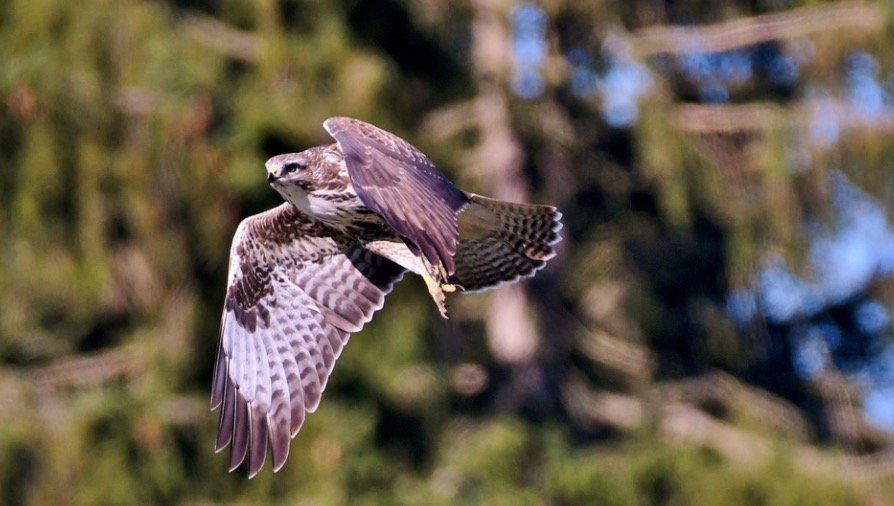
Appearance, Behavior, and Size of Common Buzzard
The common buzzards have commonly light brown, dark brown, and white feathers, their eyes are medium to large-sized and the beak is curved. The length of the bird is around 15 to 22 inches and it weighs up to 1 to 3 pounds.
The most interesting fact about the bird is the males are greater than females and have less weight. Thus the males are considered great flyers. The bird has a large wingspan of around 42-53 inches. Their large feathers are also helpful for many purposes.
They hide from predators in the wood due to brown fathers. They can also survive in danger due to their great speed.
Common Buzzard vs Vultures
In North America, both the species are considered as some. The persons call buzzard to turkey vultures. How ere in Europe, the common buzzard is not confused with vulture but it is considered a hawk sometimes. Both the species vary in their diet.
The vultures feed on carrion, while the common buzzard eats various organisms including reptiles, rodents, and birds. They also consume the carrion of animals. The foot structure is also different in both species.
The buzzard uses its feet for griping prey which is strong talons and heaps them to carry objects. On the other hand, the vulture’s feet are not much strong.
The major difference between both species can be distinguished by their feathers. A thick layer of feathers is present in the neck of the common buzzard which is absent in the neck of a vulture.
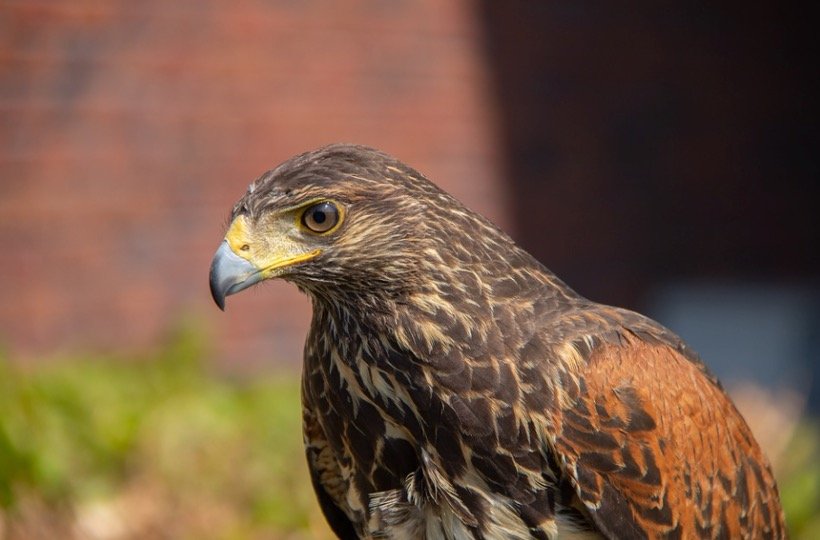
Hawks vs Common Buzzard
Sometimes common buzzards are also confused by hawks by they are also very different from each other. The common buzzards are larger and heavier than the hawks.
However, both buzzards and hawks feed on various reptiles, birds, and rodents. But usually hawks not prefer carrion and capture their prey on the other hand common buzzard eats carrion.
Migration Pattern and Timing of Common Buzzard
The common buzzard is considered a partially migratory bird. Thus according to the species and their habitats, the common buzzards vary in their migratory habits.
For instance, some individuals consider weather conditions of their habitat and migrate further south than other members, while some other individuals migrate for a short distance since they are living in the much warmer habitats and also have sufficient food availability of prey species.
One species named the steppe buzzard migrates for very long distances during winters. The birds start migration during September and October and they migrate towards Asia Minor to the Cape of Africa. Again during early March, the birds start migration once again and make their way towards their breeding grounds.
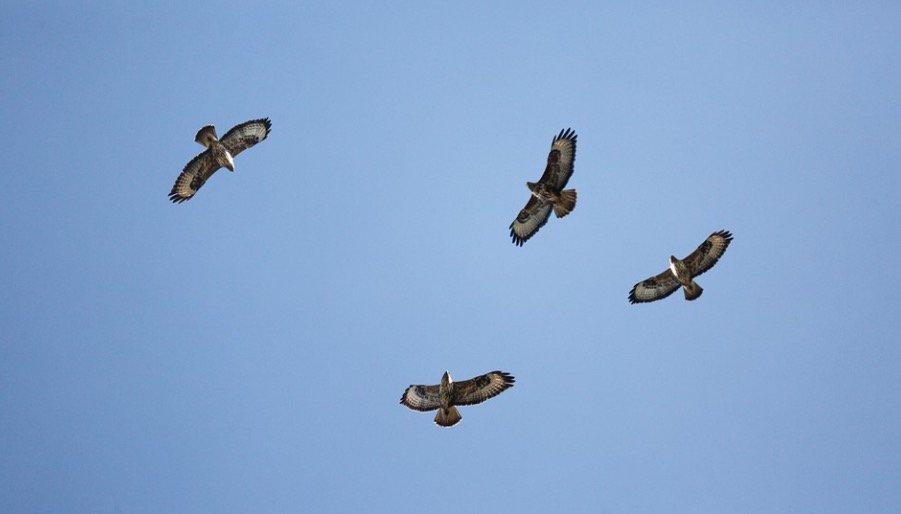
Diet of Common Buzzard
During most of the time of the day, the common buzzards spend it by looking for prey. They are carnivorous animals.
What Does Common Buzzard Eat?
The common buzzard feeds on various prey species. Their diet includes mice, snakes, and reptiles such as lizards, insects, and carrion. Most of the part of their diet is made of these species. Sometimes farmers put poisonous bait to kill the foxes, which is eaten by a common buzzard.
Predators and Threats of Common Buzzard
The common buzzard is considered as a bird of prey but it also consists of some predators, which feed upon these birds.
What Eats Common Buzzards?
There are several predators of common buzzards that eat them. For example, Eagles, wildcats, and foxes feed upon the predatory birds. When the birds are eating carrion, foxes and wildcats sneak up on them and hunt them.
They can be easily overpowered by the eagles because they are much larger than the common buzzard. The common buzzards are also facing threats from humans. They accidentally consume poisoned baits set out by people to kill foxes and by consuming poison they die.
Deforestation is another threat for these birds because it is causing problems such as habitat loss. However, the common buzzard is listed as the least concerned species in the IUCN red list for threatened species and they still have a stable population.
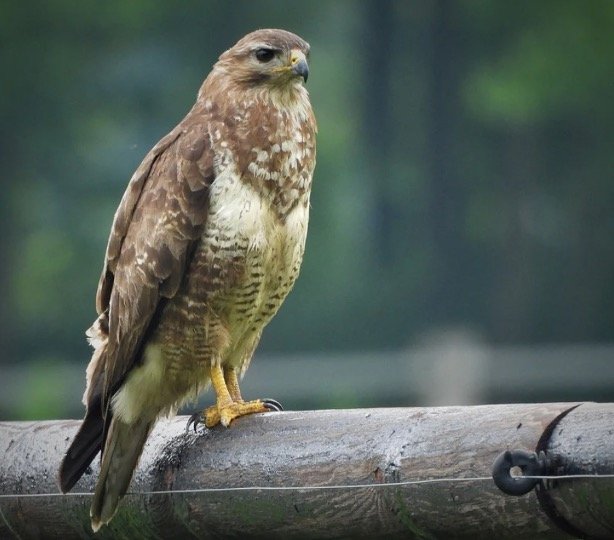
Reproduction, Molting, and Young of Common Buzzard
Common buzzards often breed from March to May. A male flies in a circular way to attract the female mate and dives. They form pairs for life thus known as monogamous birds. After mating, around 2-4 eggs were laid by the female, which hatches within 33- 38 days.
The newborn babies of the common buzzard are named chicks. The female takes care of chicks at that time male buzzard brings food for female buzzard and chicks. At the age of 50 to 60 days, the chicks get a full layer of feathers.
The chicks become strong enough and independent after 14-16 weeks after their birth. At the age of 3 years, the common buzzard reaches sexual maturity. The lifespan of a common buzzard is up to 25 years.
Population of Common Buzzard
The current population of common buzzards estimated by the IUCN red list of threatened species is around 2,100,000 to 3,700,000 mature birds all over the world. Even only in European countries, around 1,630,000 to 2,170,000 birds are living.
Europe also has the largest population of common buzzards. The birds have a stable population worldwide, thus they are listed as the least concerned species by the IUCN red list of threatened species.
